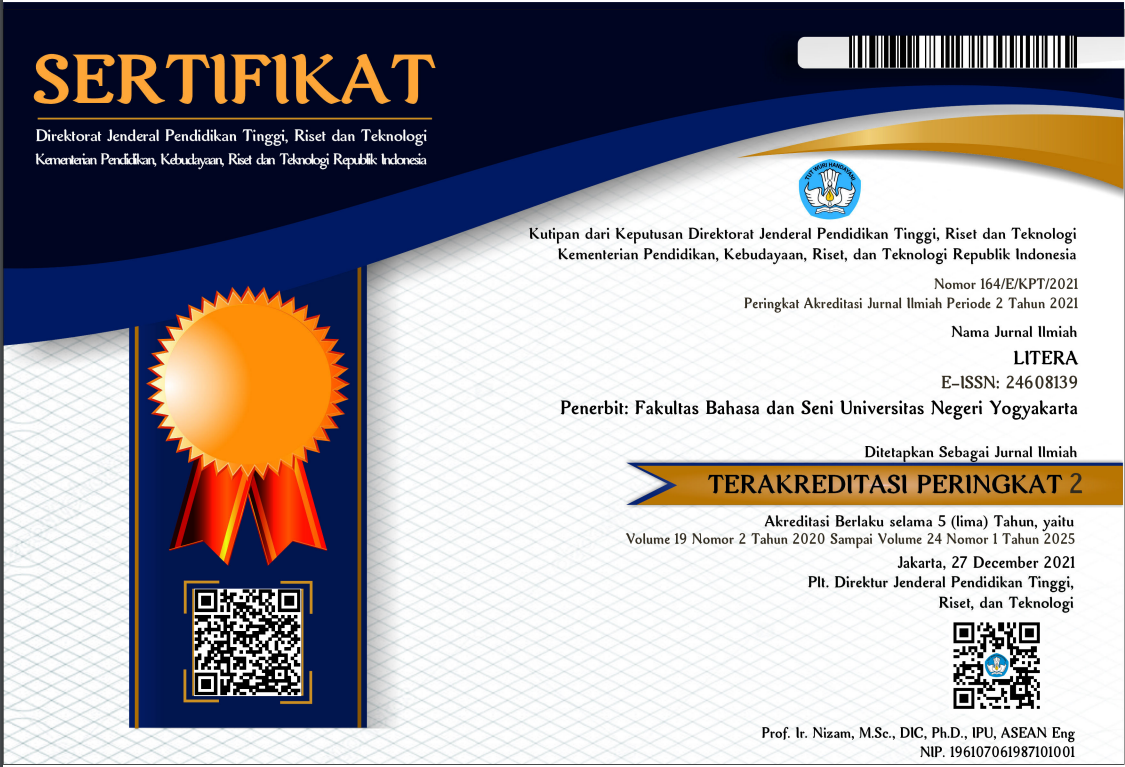ANALISIS KONTRASTIF BAHASA INDONESIA, JAWA, DAN BANJAR SEBAGAI DASAR PENYUSUNAN MODEL PEMBELAJARAN BAHASA INDONESIA PERMULAAN
Vol. 10 No. 2: LITERA OKTOBER 2011
Articles
Downloads
where Javanese is used and in South Kalimantan where Banjarnese is used. The data were collected through interviews, observations, and listening and were analyzed using the contrastive-synchronic technique. The findings show that similarities among the three language lie in the levels of vocabulary, phrase structure, and clause/ sentence structure. In the level of vocabulary, there are similarities in phonological and morphological aspects. In the level of phrase structure, there is a similarity in the head-modifier structure. In the level of clause or sentence, there are similar structures of S-P, S-P-O/Com, and S-P-Adv, showing that the three languages belonging to the group with the S-V-O or S-P-O pattern.
Suhardi, S., & Santoso, J. (2013). ANALISIS KONTRASTIF BAHASA INDONESIA, JAWA, DAN BANJAR SEBAGAI DASAR PENYUSUNAN MODEL PEMBELAJARAN BAHASA INDONESIA PERMULAAN. LITERA, 10(2). https://doi.org/10.21831/ltr.v10i2.1160
Downloads
Download data is not yet available.
























